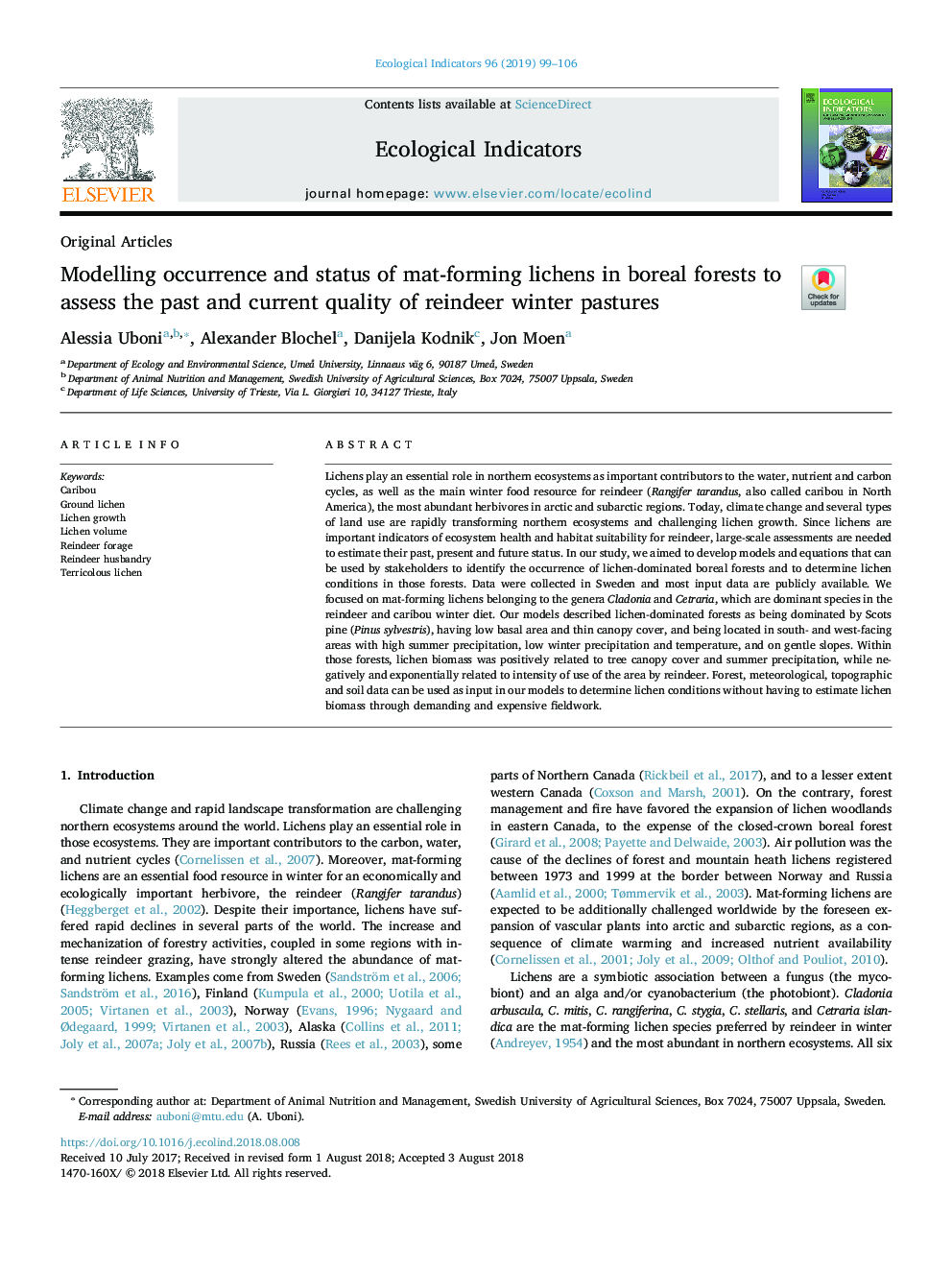| Article ID | Journal | Published Year | Pages | File Type |
|---|---|---|---|---|
| 10144192 | Ecological Indicators | 2019 | 8 Pages |
Abstract
Lichens play an essential role in northern ecosystems as important contributors to the water, nutrient and carbon cycles, as well as the main winter food resource for reindeer (Rangifer tarandus, also called caribou in North America), the most abundant herbivores in arctic and subarctic regions. Today, climate change and several types of land use are rapidly transforming northern ecosystems and challenging lichen growth. Since lichens are important indicators of ecosystem health and habitat suitability for reindeer, large-scale assessments are needed to estimate their past, present and future status. In our study, we aimed to develop models and equations that can be used by stakeholders to identify the occurrence of lichen-dominated boreal forests and to determine lichen conditions in those forests. Data were collected in Sweden and most input data are publicly available. We focused on mat-forming lichens belonging to the genera Cladonia and Cetraria, which are dominant species in the reindeer and caribou winter diet. Our models described lichen-dominated forests as being dominated by Scots pine (Pinus sylvestris), having low basal area and thin canopy cover, and being located in south- and west-facing areas with high summer precipitation, low winter precipitation and temperature, and on gentle slopes. Within those forests, lichen biomass was positively related to tree canopy cover and summer precipitation, while negatively and exponentially related to intensity of use of the area by reindeer. Forest, meteorological, topographic and soil data can be used as input in our models to determine lichen conditions without having to estimate lichen biomass through demanding and expensive fieldwork.
Keywords
Related Topics
Life Sciences
Agricultural and Biological Sciences
Ecology, Evolution, Behavior and Systematics
Authors
Alessia Uboni, Alexander Blochel, Danijela Kodnik, Jon Moen,
